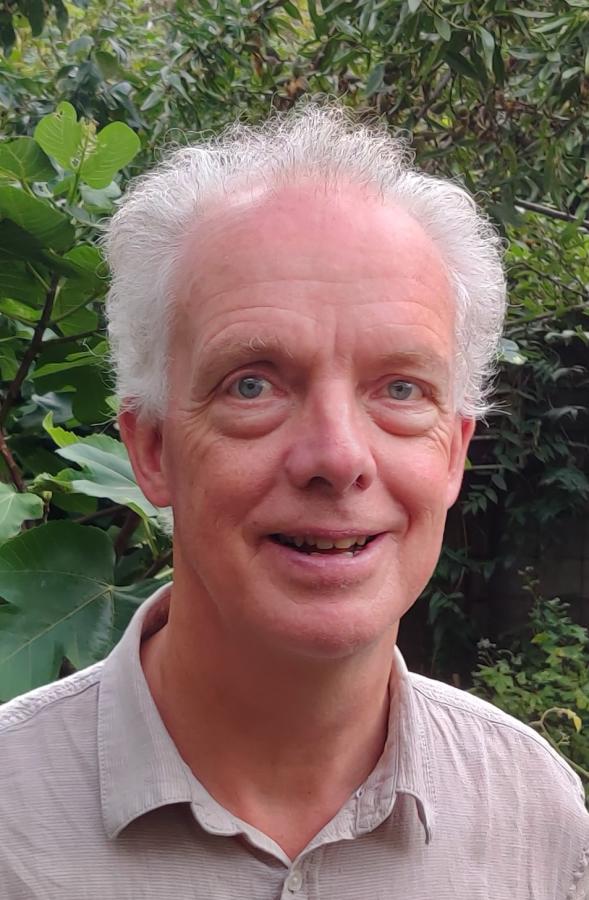With nearly 40 years of experience in underwater acoustics, Christ de Jong, Senior Scientist at TNO, leads work package 2 of DEMASK, focusing on noise modelling. His team works on mapping how much noise is produced by ships and offshore wind farms in the North Sea, both now and in the future, and explores ways to reduce its impact.

Senior Scientist at TNO
Can you tell us about your role in DEMASK?
“Before 2007, my work primarily focused on underwater acoustics in relation to the naval work environment. How can navy ships be made quieter? And how do you measure their sound? In 2007, when the first offshore wind farms were built in the North Sea, concerns arose about underwater noise and its impact on marine life. With TNO’s expertise in underwater acoustics, we were one of the few groups in the Netherlands with knowledge on the subject, which led to our involvement. Today, I work almost full-time on projects related to the environmental impact of shipping and the construction of offshore wind farms. After years of discussing ship acoustics and underwater noise with engineers, I now have the opportunity to collaborate with biologists and ecologists to better understand what noise pollution actually means for marine life.
This makes DEMASK a great fit. The international aspect of this project is particularly appealing to me. Given the nature of this topic, we rely on cooperation with other countries around the North Sea.”
What is work package 2 about?
“Within DEMASK, I lead work package 2, which focuses on modelling underwater sound in the North Sea. TNO was also involved in the JOMOPANS project, where we created noise maps to assess how much noise ships generate. The key question within DEMASK is whether we can also model future scenarios to determine the impact of certain measures on underwater noise.
We are analysing what happens when shipping routes are adjusted, stricter requirements are imposed on ships, or speeds are limited—and whether we can accurately map these effects. To do this, we need to generate new data for our calculations. Additionally, we are gathering information on areas where little data is available. That’s why, within work package 2, we are also conducting measurements at sea, for example, near wind turbines to determine how much noise they produce. Furthermore, we are measuring radiated noise from ship types for which we currently have limited data. By the end of this year, I expect we will have soundscape maps of the North Sea for future scenarios.”
Team DEMASK at an event
What challenges do you face with your team?
“Working across three different work packages, each with its own discipline, comes with challenges. Everyone approaches the project from their own expertise and needs. For example, what an expert from work package 1 proposes may require further adaptation before it can be effectively modelled.
Additionally, our team must coordinate with the other work packages on how to represent the soundscape maps. These maps must be relevant for marine animals. Should we create separate soundscape maps for different species? Together, we must determine which scenarios to prioritize to effectively manage sound pollution.”
How do you see the future of the project?
“I think it is important that this topic gets the attention it deserves. Implementing measures is challenging and I think real change will only happen when we can present the results of this project and demonstrate which measures are effective. Until then, many parties are still searching for answers. Both the industry and governments want to take action for marine life. We know there may be effects, but for now, there are still many unanswered questions. With our research we aim to contribute to finding these answers!”
About TNO:
TNO is an independent research organisation established by law as legal public entity, resulting in certain societal responsibilities to create solutions to the challenges that society presents us. As one of its core themes, TNO aims for achieving a sustainable society. TNO’s acoustics division strives to support governments and industry in the Netherlands and abroad to better understand, use and control sound. Capabilities include model development (numerical and theoretical), experimental testing and monitoring, system and software development, product innovation, and impact and policy studies. Through involvement in European research, standardization work and links with universities and partners, a broad range of acoustic expertise is available.
